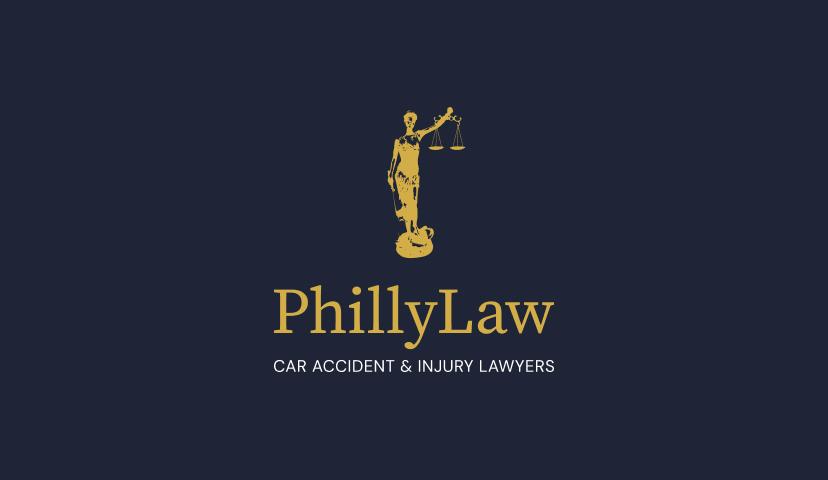Table of Contents
Common Causes of Pedestrian Accidents in Pennsylvania
Pedestrian accidents occur with alarming frequency in Pennsylvania, reflecting a concerning trend seen across many parts of the United States. While exact numbers fluctuate annually, the Pennsylvania Department of Transportation (PennDOT) reports that thousands of pedestrians are involved in traffic-related accidents each year in the state.
These incidents not only highlight the inherent risks pedestrians face but also underscore the urgent need for improved safety measures and awareness among both drivers and pedestrians to mitigate these occurrences. If you have been injured in a pedestrian accident, contact an experienced pedestrian accident lawyer at the PhillyLaw law firm for a free consultation to understand your rights to recover compensation for your injuries.
How a Driver Can Cause a Pedestrian Accident
In Pennsylvania, pedestrian accidents often stem from a variety of factors that compromise the safety of individuals on foot.
Driver Inattention
Pedestrian accidents happen when drivers fail to pay attention. Driver inattention plays a significant role in pedestrian accidents, often resulting from the driver’s failure to stay fully engaged with the driving process. Distractions, particularly from mobile phone use, divert the driver’s focus from the road, making it challenging to notice pedestrians crossing streets or walking alongside roadways. This lapse in attention can lead to delayed reaction times, preventing drivers from stopping or yielding in time to avoid a collision with pedestrians.
The risk is heightened in areas with high pedestrian traffic, such as school zones, shopping districts, and residential neighborhoods, where vigilance is especially crucial. Consequently, even a momentary glance away from the road to check a text message or adjust the GPS can result in devastating consequences for pedestrians.
Speeding
Speeding also significantly contributes to these traffic accidents, limiting a driver’s reaction time to prevent a collision. The faster a vehicle is moving, the less time the driver has to recognize a pedestrian in the roadway and respond accordingly. High speeds reduce the effectiveness of braking and increase the distance required to stop a vehicle, dramatically escalating the risk of striking a pedestrian. Furthermore, collisions that occur at higher speeds are more likely to result in severe injuries or fatalities due to the increased force of impact. Driving over the posted speed limit in pedestrian-heavy areas disregards the lower speed limits often set to protect those on foot, thereby amplifying the chances of tragic accidents.
Inadequate Pedestrian Crossing Areas
Poorly designed or inadequately maintained pedestrian crossings add to the risk, making it difficult for pedestrians to safely cross roads. Inadequately designed pedestrian crossings create environments that inherently endanger those on foot. Such crossings may lack visible signage, proper lighting, or signals that clearly dictate the right of way, leading to confusion among both drivers and pedestrians.
When crosswalks are not clearly marked or are situated in areas with poor visibility, drivers may not notice pedestrians until it is too late to stop. Furthermore, crossings without safety features like pedestrian islands or adequate waiting times at signals can force pedestrians to rush, increasing the likelihood of accidents. These design flaws not only make it challenging for pedestrians to safely negotiate traffic but also contribute to drivers inadvertently overlooking their presence, significantly heightening the risk of incidents.
Driving Under the Influence
Many pedestrian accidents occur when a driver is under the influence of alcohol or drugs. Driving a motor vehicle under the influence remains a critical issue, impairing a driver’s judgment and increasing the likelihood of accidents involving pedestrians.
Driving under the influence of alcohol or drugs drastically impairs various cognitive functions critical for safe driving, including judgment, coordination, and reaction time. Alcohol and certain drugs can significantly reduce a driver’s ability to make quick decisions and respond to changes in their environment, such as recognizing and stopping for pedestrians. Impairment from substances makes it challenging for drivers to accurately gauge distances, leading to misjudgments in the space needed to safely pass or stop for pedestrians. Furthermore, substances can alter perception and lead to risky driving behaviors, such as speeding, failing to yield, or ignoring traffic lights increasing the chance of pedestrian accidents. The reduced inhibitory control can result in a disregard for traffic laws designed to protect pedestrians, making accidents more likely and potentially more severe.
How a Pedestrian Can Cause a Pedestrian Accident
While the responsibility for preventing accidents often falls on drivers, pedestrians themselves can sometimes be the cause of traffic incidents. Pedestrian negligence is one of the causes of pedestrian accidents.
Distracted Pedestrians
One of the common causes of pedestrian accidents is pedestrian distraction, often as a result of using mobile phones or wearing headphones while crossing streets, which can prevent them from noticing oncoming traffic.
Ignoring Traffic Signals
Many pedestrian accidents occur when pedestrians ignore traffic signals or cross streets against a red light, as drivers may not anticipate their movements.
Darting into Traffic
Additionally, when pedestrians suddenly dart into traffic away from designated crossing areas, they give drivers little time to react, which can lead to accidents.
Understanding that both drivers and pedestrians share the responsibility for safety can help reduce the number of accidents and ensure safer environments for all road users.
Pedestrian Accidents are More Dangerous Than Typical Car Accidents
Pedestrian accidents are inherently more dangerous than typical traffic crashes due to the lack of physical protection that pedestrians have compared to vehicle occupants. In a collision, pedestrians are exposed to direct impact with vehicles and the road, leading to a higher possibility of severe injuries or fatalities. Unlike vehicle occupants who are shielded by the car’s structure and safety features like airbags and seat belts, pedestrians face the full force of impact. The human body is simply not built to withstand the kinetic energy transferred during a vehicle-pedestrian collision, making such accidents particularly perilous.
Pedestrian Fatalities
Pedestrian deaths resulting from accidents are not only tragic but also alarmingly frequent, often stemming from the reasons outlined previously, such as driver distraction, speeding, and impaired driving. When a pedestrian is struck by a vehicle, the lack of protection makes the outcome much more deadly compared to occupants in a car. The human body, without the benefit of safety features such as airbags and seat belts, absorbs the full brunt of the impact and can suffer catastrophic injuries.
In many cases, these injuries are fatal. The physical disparity between a vehicle and a pedestrian means that even at lower speeds, collisions can cause fatal pedestrian accidents. High-speed impacts significantly increase the force of impact, further elevating the risk of death. Pedestrian fatalities highlight the critical need for rigorous traffic safety measures and responsible behavior from both drivers and pedestrians to prevent such devastating incidents. If a loved one has died as a result of a pedestrian accident, contact a pedestrian accident attorney at PhillyLaw to learn how your family can make a pedestrian accident claim and recover wrongful death damages for this tragic loss.
Ways to Prevent Pedestrian Accidents
To mitigate the risk of pedestrian injuries and reduce pedestrian accidents, both drivers and pedestrians can take proactive measures.
Avoid Distractions and Follow Traffic Laws
Drivers should prioritize attention while on the road, avoiding distractions such as mobile phones, and adhere strictly to speed limits, especially in areas frequented by pedestrians.
Traffic Calming Measures
Implementing traffic calming measures, like speed bumps and extended pedestrian crossing times, can also significantly decrease accident rates.
Visibility
On the other hand, pedestrians should ensure they are visible to drivers by wearing reflective clothing at night and always use designated crossing points.
Education
Education plays a crucial role as well; both drivers and pedestrians should be informed about the importance of road safety measures and the potential consequences of negligence.
Infrastructure Improvements
Lastly, municipalities can enhance safety by improving infrastructure, such as better lighting around pedestrian paths and clearly marked crosswalks.
PhillyLaw is Committed to Helping You or Your Family Recover Damages from a Pedestrian Accident
At PhillyLaw, we have a deep understanding of pedestrian accident cases and the profound impact they can have on an individual’s life. Our experienced legal team is committed to providing comprehensive support and expert legal advice to those who have been injured in such accidents. We recognize the physical, emotional, and financial toll that a pedestrian accident can inflict on victims and their families. Thus, we are dedicated to diligently working with our clients to ensure they receive the compensation they are entitled to. If you’ve been injured in a pedestrian accident or a loved one has died as a result of a pedestrian accident, trust in the expertise of PhillyLaw to guide you through the legal process with compassion and professionalism. Contact PhillyLaw today for a free consultation.






